A curator is someone who protects the artwork in an art gallery and collects, maintains, selects, and exhibits the artwork properly. This exact concept can be used for content curators. A content curator is a marketer who researches and selects the best online content, adds value, and shares it on social media for its target audience.
In other words, curated content is when marketers strategically use and share original content on social media for their target audience. By strategically, we mean twisting the existing information with a fresh perspective and proper alignment with the needs of the followers. This is a great practice for enhancing one’s content marketing strategy.
Let’s get into the details of content curation.
What is Curated Content?
Curated content involves selecting content from other websites and social media accounts, adding personal value, and sharing on your social media platforms. In other words, finding someone else’s relevant & quality content, selecting it, giving your personal touch, and sharing it with your followers.
Instead of making every social media post from scratch, you can grab content like business blogs, cool graphics, or news stories from elsewhere and pop them on your social media pages. By gathering content from different places, you can save loads of time and avoid burning out trying to make new stuff every single day. When you curate content, you look for reliable sources that talk about the topics your audience cares about, then share their posts.
Think of yourself like a museum curator, picking the best stuff to show your audience. Because, let’s face it, you don’t want to share stuff from dodgy sources or things that don’t match what your audience is into.
Three – Step Process for Content Curation
Content curation involves finding, evaluating, and organizing content from different sources, such as blogs, articles, videos, and social media. The curated content is then shared through platforms like social media, newsletters, or a dedicated website.
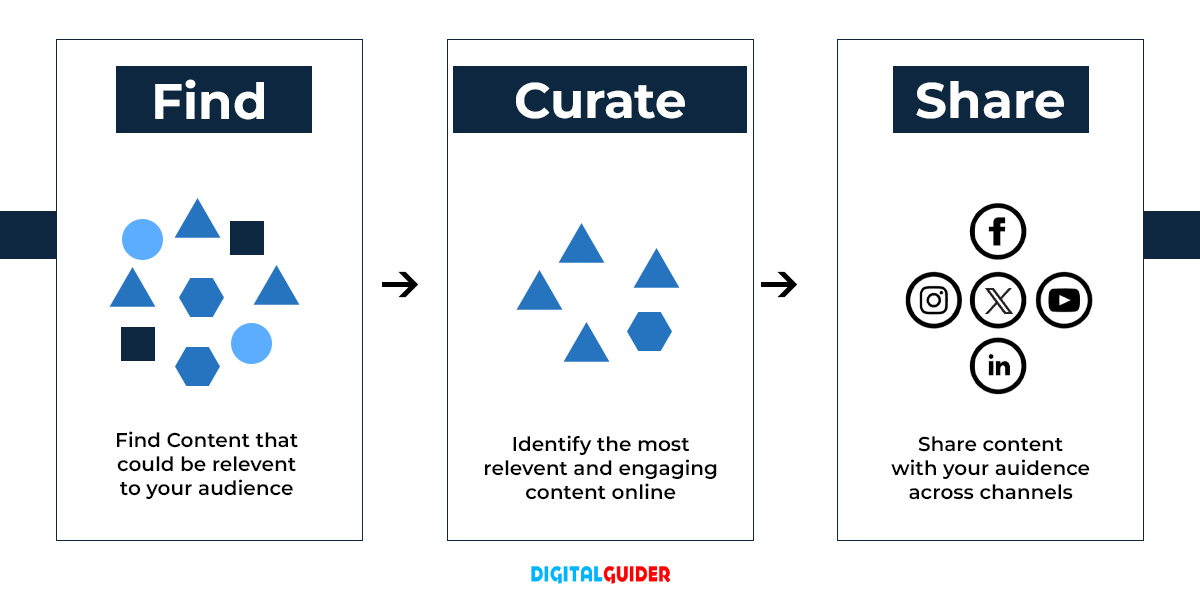
1- Discovering Relevant Content
When curating content, the aim is to find top-notch content that speaks directly to your audience. It’s all about picking out articles, videos, or posts that match what your followers are into, whether it’s about your industry or niche. Let’s say you’re in the electric car business. You’d want to share stuff from magazines that regular folks read, covering topics like government rules, cool new tech, and other hot topics. Since your audience is likely consumers, it’s smart to lean towards consumer mags.
2 – Getting It Sorted
Once you’ve got your hands on the content you want to share, it’s time to get organized. Some stuff is more time-sensitive than others. If there’s an article about something happening right now, you’d want to post it ASAP to keep things fresh. So, sort out your curated content by what’s most relevant, and don’t forget to add valuable content from your end, too. While curated content can spice up your strategy, don’t rely on it entirely.
3 – Timing Is Everything
Once you’ve sorted out all your curated goodies by relevance, you can start scheduling your posts using your CRM or social media tools.
So, next time you’re scrolling through social media and see an interesting article shared by someone you follow, that’s a great example of curated content!
What are the benefits of curated content?
Curated content offers a bunch of advantages, both for you and your audience. Here are some of the key benefits:
→ Saves Time and Resources
Creating high-quality content consistently requires much effort. Curated content allows you to supplement your original content strategy with valuable pieces from elsewhere, saving you significant time and resources.
→ Boosts Credibility and Positions You as an Expert
Sharing well-regarded content from trusted sources demonstrates your knowledge and keeps you updated on industry trends. This can help establish you as a thought leader in your field.
→ Improves Audience Engagement and Provides Value
By carefully choosing content relevant to your audience’s interests, you provide them with valuable resources and keep them engaged. Curated content can spark conversations and establish you as a go-to source for information.
→ Enhances SEO
Search engines favor websites that link to high-quality sources. When you curate content and link back to the original creators, it can improve your website’s search ranking.
→ Builds Relationships with Other Brands and Influencers
Sharing content with others can foster connections and lead to collaborations or mentions from them, further expanding your reach.
→ Offers a Diverse Range of Content
Curated content provides your audience various perspectives and formats, keeping things interesting and informative.
Overall, curated content is a strategic way to enhance your content strategy, build trust with your audience, and establish yourself as a knowledgeable source within your field.
Before we move forward and learn about curated content, go through the infographic below to know the difference between creating ‘original content’ and creating ‘curated content.’
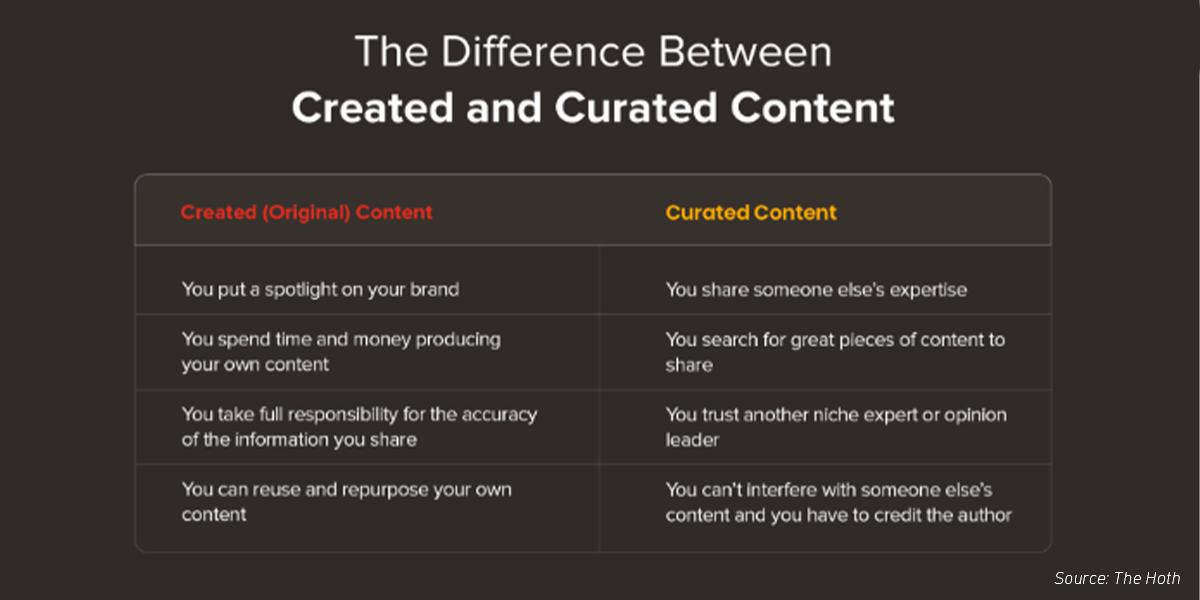
How do you create curated content?
Here’s a breakdown of the steps involved in creating curated content:
1 – Know Your Audience
This applies to any content creation strategy. Before diving in, understand your target audience’s interests, needs, and the kind of content they typically engage with. This will guide you in selecting relevant and valuable pieces for them. Create a buyer’s persona and personalize your content marketing.
2 – Identify High-Quality Sources
Building a strong network of credible sources is essential. Look for reputable websites, publications, influencers, and social media accounts known for producing high-quality content in your niche. Subscribe to RSS feeds or tools like social media listening platforms to stay updated on fresh content.
For example, if you want to stay updated on fresh content from Harvard Business Review you can open an RSS feed using RSS reader to see if there is any new content.
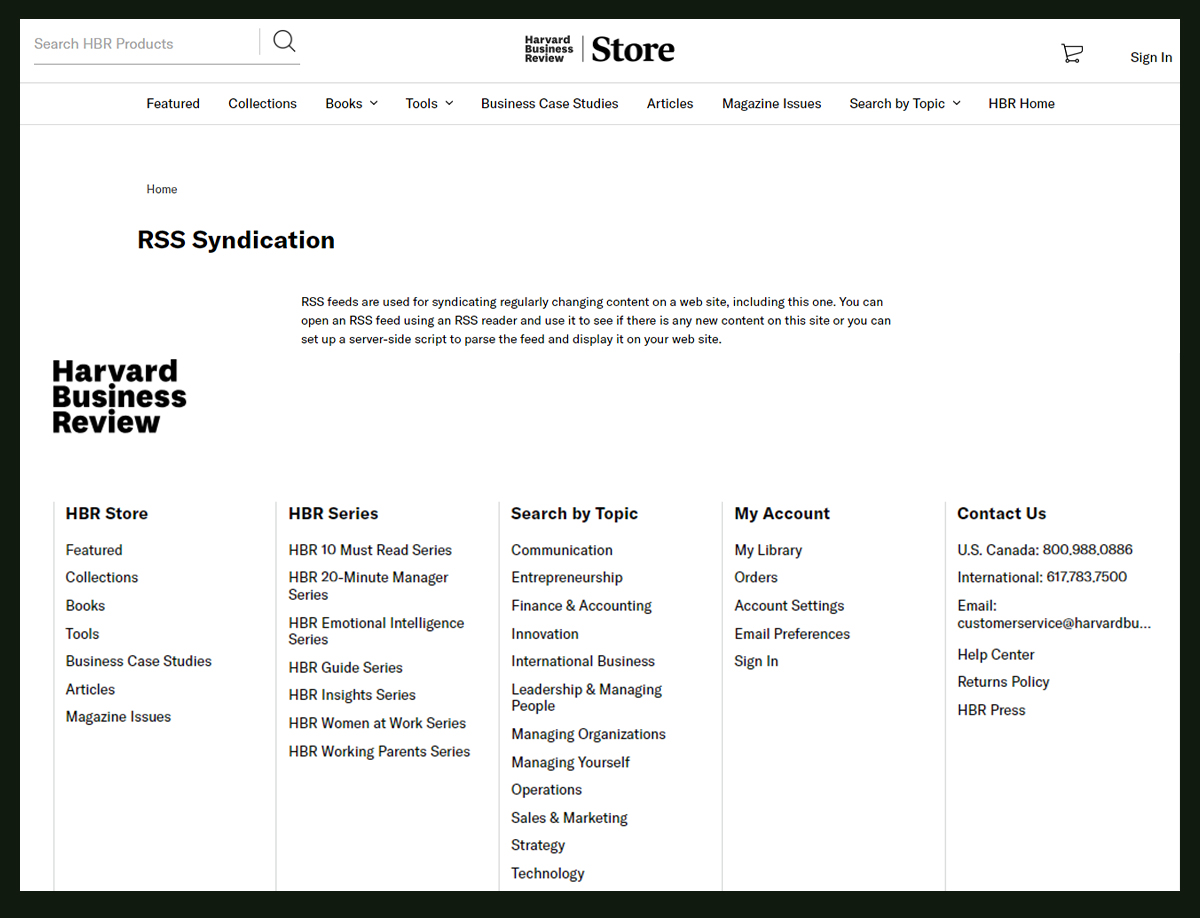
3 – Find the Right Content
With your audience in mind, actively search for content that resonates with their interests. This could involve browsing through your identified sources, exploring social media trends, or using content curation tools.
For instance, a travel blogger actively searches for content that resonates with their audience’s travel interests. They might explore travel websites, Instagram hashtags, and YouTube channels to find inspiring travel destinations, hidden gems, and travel tips. They attract and retain followers with similar interests by curating engaging content such as stunning travel photography, detailed itineraries, and personal travel stories.
4 – Curate and Organize
Don’t just dump links! Skim through the chosen content and identify key takeaways or exciting aspects. You can organize the curated content by theme & format (articles, videos, infographics) or create a content series around a specific topic. Check out the infographic below –
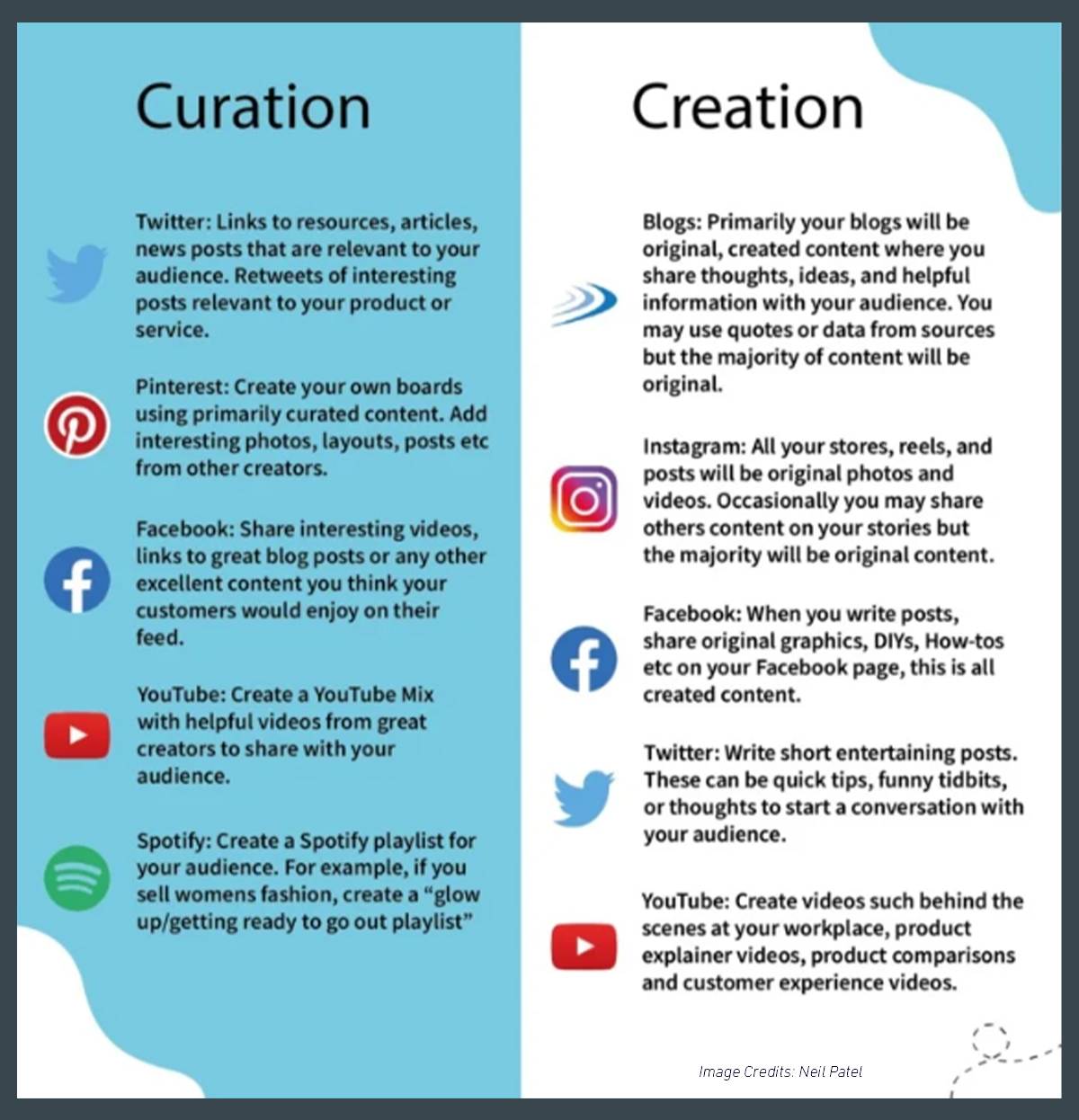
Various Formats of Content
5 – Add Your Value
Just sharing links isn’t enough. Make the curated content your own by adding your insights, commentary, or analysis. This demonstrates your expertise and helps your audience understand the content better. You need to research more from your end to make give your spics to the content; only then will it be known as curated; otherwise, it’ll just remain a copy!
6 – Give Credit Where Credit’s Due
Always attribute the original source of the curated content. This includes proper citation and linking to the original creator’s website or social media profile. Go through the below example of giving credit to someone –
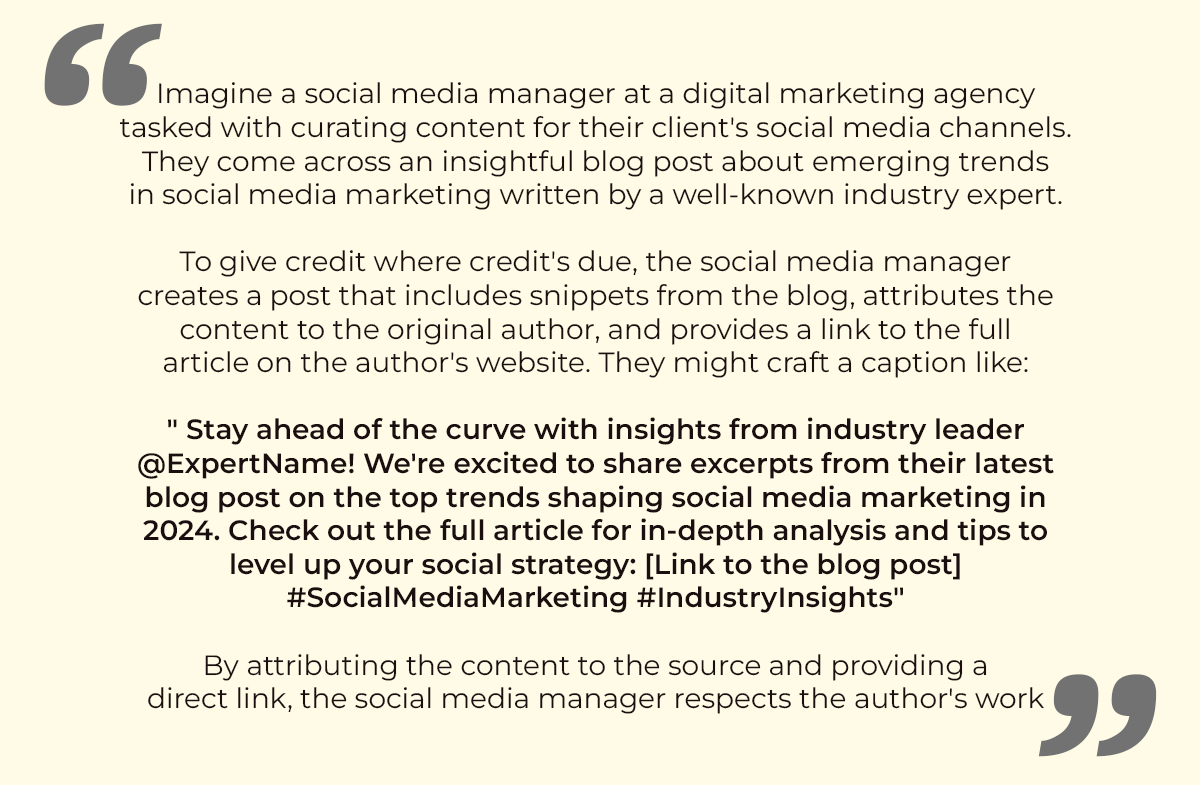
7 – Choose the Right Platform
Different platforms work better for different types of content. For example, infographics might be a good fit for Pinterest, while longer thought-leadership articles might be more suitable for LinkedIn.
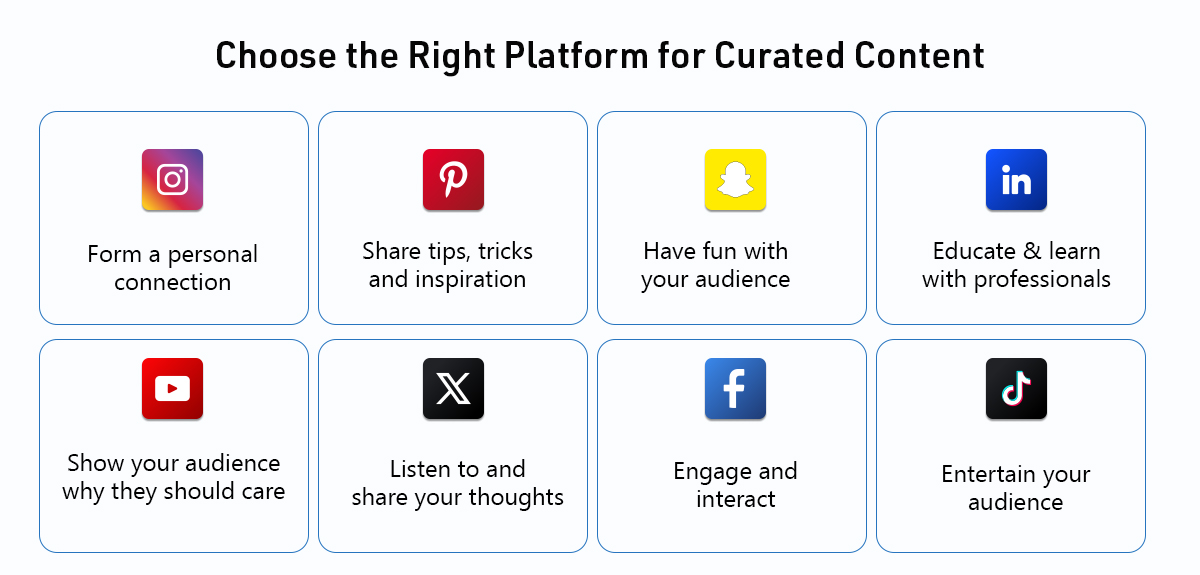
8 – Schedule and Promote
Consistency is key! Plan your content calendar and schedule your curated posts strategically. Promote your curated content across your chosen platforms to reach your target audience.
9 – Track and Analyze
Monitor how your curated content performs. See what resonates with your audience and what doesn’t. This will help you refine your curation strategy over time.
By following these steps, you can create valuable and engaging curated content that informs your audience, establishes your expertise, and strengthens your overall content strategy.
Which are the best practices to follow curated content?
Here are some best practices to follow when curating content:
- Focus on Relevance and Quality: Content should directly align with your brand and target audience’s interests. It should also come from reputable sources known for high-quality information.
- Maintain Brand Consistency: Curated content should complement your overall brand voice and tone. Ensure it feels like it naturally belongs on your platform.
- Add Value with Insights: Don’t just share links! Provide your own commentary, analysis, or key takeaways to make the curated content even more valuable for your audience.
- Credit Sources Properly: Always attribute the original source and link back to their website or social media profile. This shows respect and avoids plagiarism.
Pro Tip – Aim to include curated content in about 30% to 60% of your social media posts, with the remaining slots reserved for your own original content.
- Mix-Up Content Formats: Keep things interesting by incorporating a variety of content formats like articles, videos, infographics, or podcasts in your curation strategy. Well, you also need to understand and apply content repurposing.
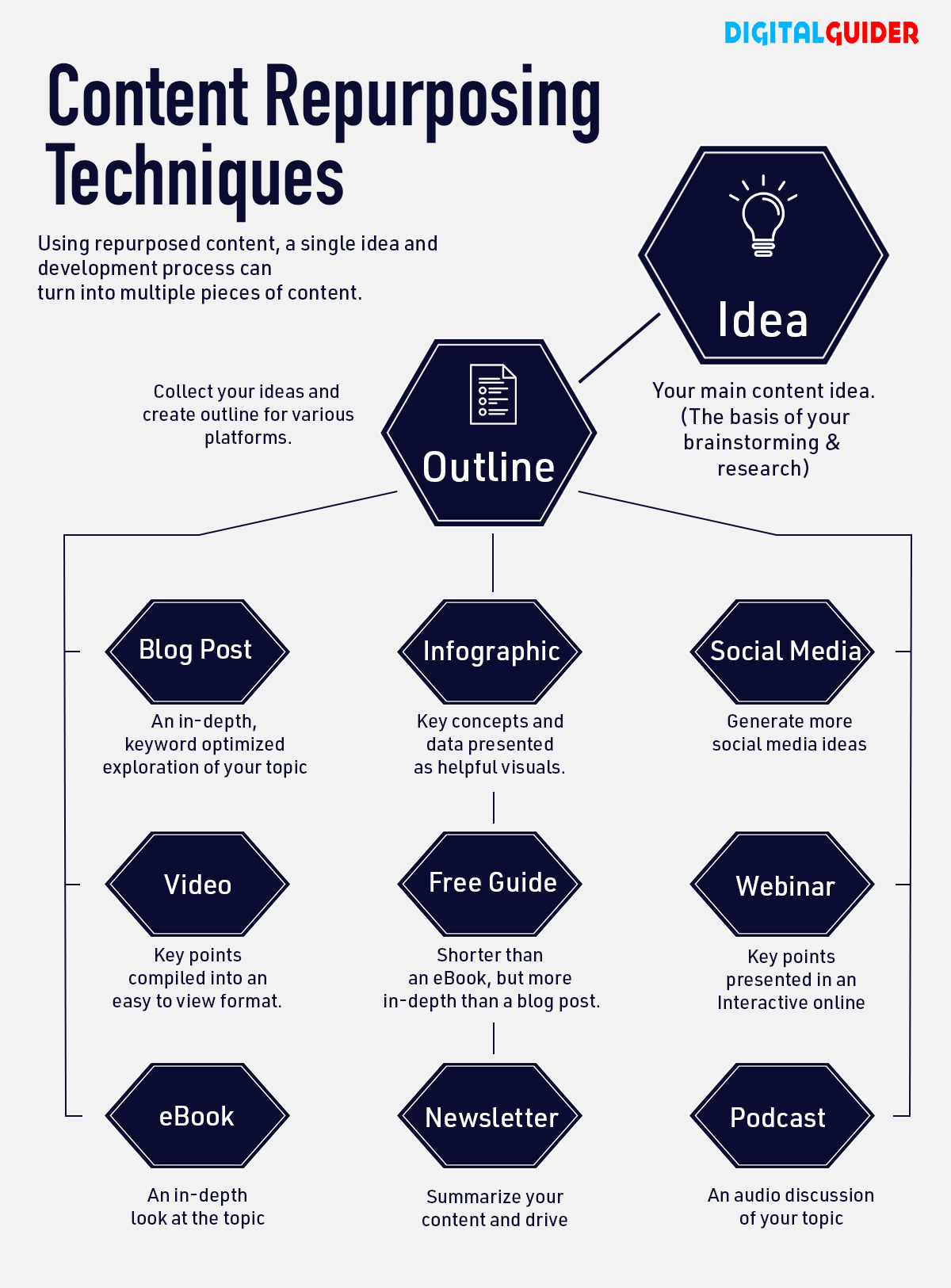
- Add Calls to Action: The most important thing you want them to do after seeing your content is to take action! CTAs urge them to take action, whether purchasing, subscribing to a service, engaging with content, or participating in an event. The effectiveness of a CTA often depends on its clarity, relevance, and ability to prompt immediate action.
For instance:
“Like and Share”
“Tag a Friend”
“Comment Below”
“Follow Us for Updates”
“Join the Conversation”
For Event Promotion on Social Media
“Register Now”
“Get Your Tickets”
“Save Your Spot”
“Join the Event”
“RSVP Here” and many other CTAs.
- Schedule and Promote Strategically: Consistency is key! Plan your content calendar and schedule your curated posts to maximize reach and engagement. Promote them across your chosen platforms.
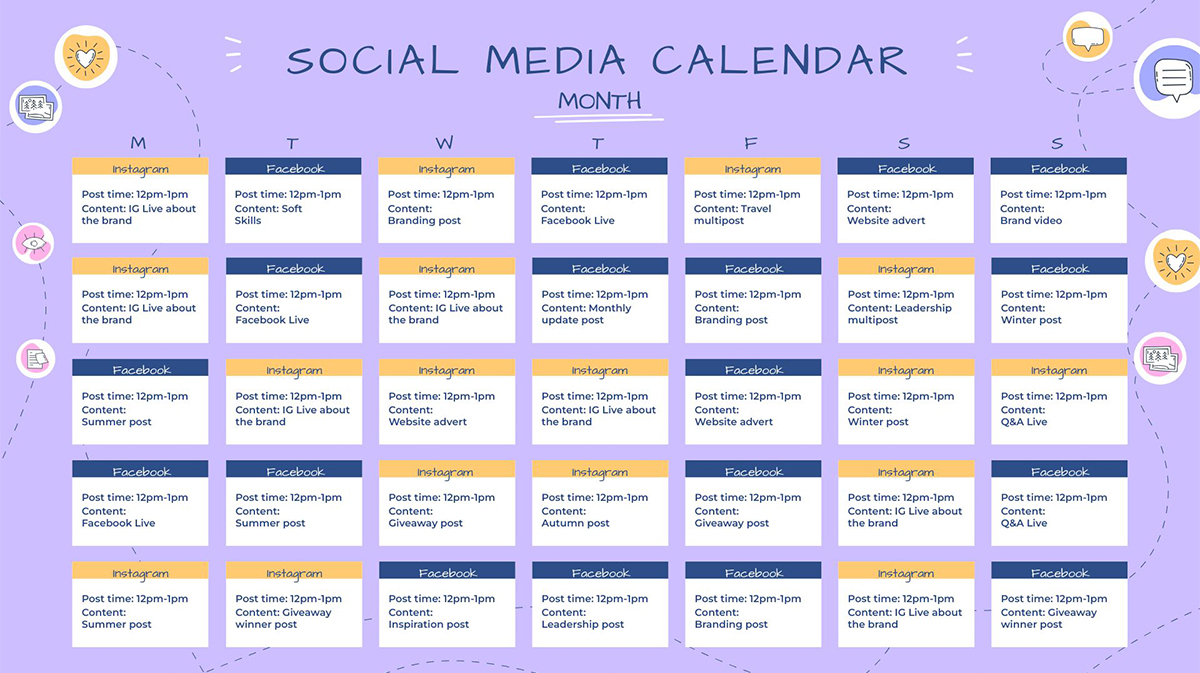
- Track Performance and Adapt: Monitor how your audience interacts with your curated content. See what resonates with them and what doesn’t. Use this data to refine your curation strategy over time.
- Don’t Overdo It: Curated content should complement your original content strategy, not replace it. Strive for a healthy balance to maintain audience interest and establish your brand voice.
By following these best practices, you can ensure your curated content is informative and engaging and strategically positions you as a thought leader within your niche.
That’s a wrap!
Curated content can be a powerful tool to enhance your content strategy. It saves time, builds trust with your audience, and positions you as an expert. Following the steps and best practices outlined above, you can create valuable and informative content experiences that keep your audience engaged and coming back for more. Curation is all about providing a well-rounded experience – being a curator, not just a collector.







